In Photos: Devastating Look at Raging Wildfires in Australia
The wildfires in Australia are at epic proportions, seeming to crackle and billow across the entire continent. Since the fire season began in July, at least 24 people have died due to those blazes, while in New South Wales alone fires have decimated more than 1,300 houses, according to CNN. The island nation is home to more than people, as animals from koalas to wallabies to horses and birds call the brush their abode. And they are taking a hit, with some estimates suggesting 480 million animals in New South Wales have been affected since the fires started there in September, according to Chris Dickman, an expert on Australian mammals and a Fellow of the Australian Academy of Science. Here's a look at the havoc wreaked on Australia's ecosystems that are going up in flames.
Burnt paws

Even animals that survive the fires are showing the effects. Here, a wallaby licks its burnt paws, after having escaped a bushfire on the Liberation Trail in New South Wales, seen on Nov. 12, 2019.
Treating Frizzle
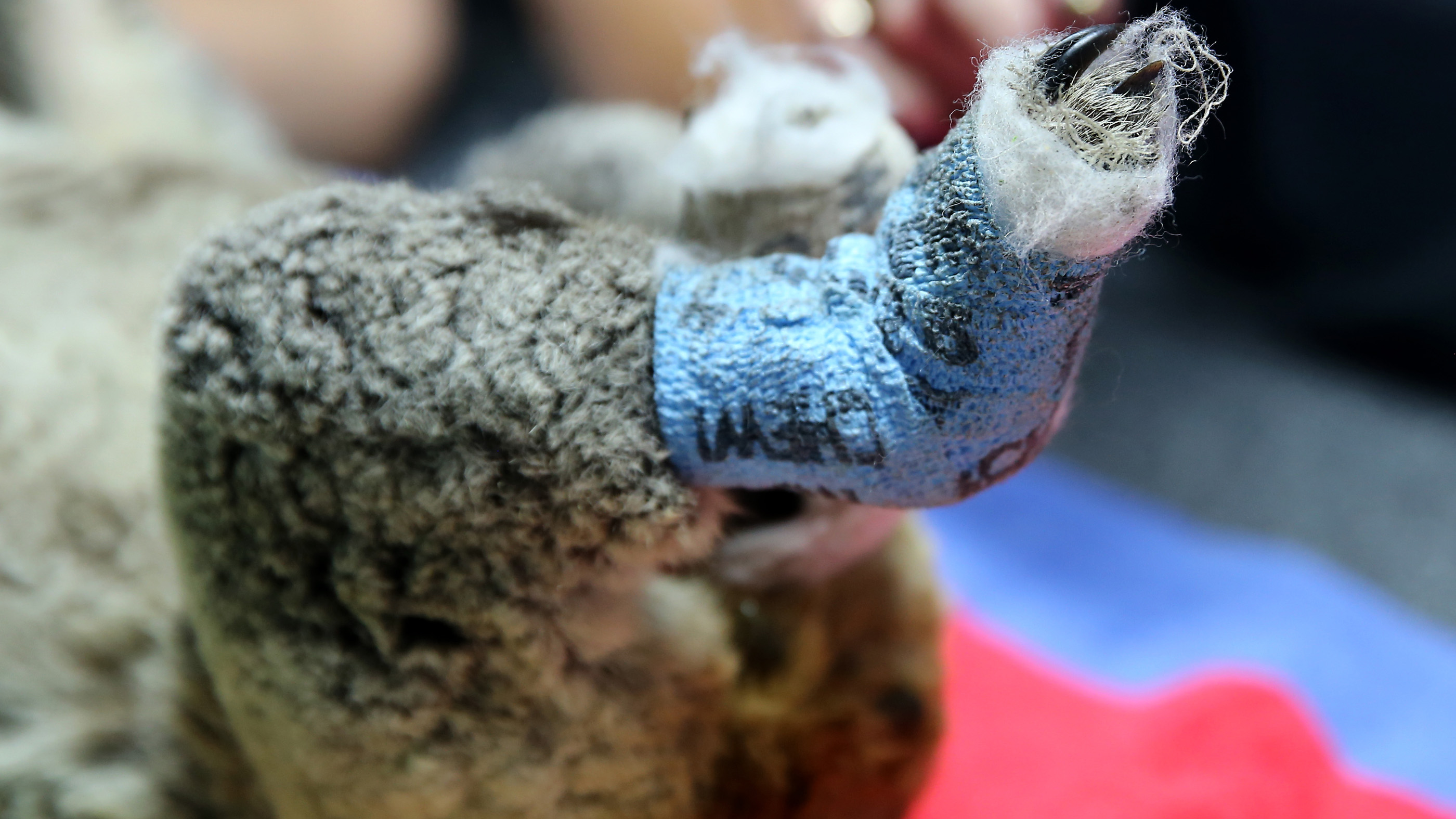
Doctors treat Frizzle, a koala from the town of Taree in New South Wales, for burns. Staff at the Port Macquarie Koala Hospital in Port Macquarie, Australia, have been working alongside crews from the National Parks and Wildlife Service to search for koalas following weeks of devastating bushfires across New South Wales and Queensland.
Lisa gets rescued
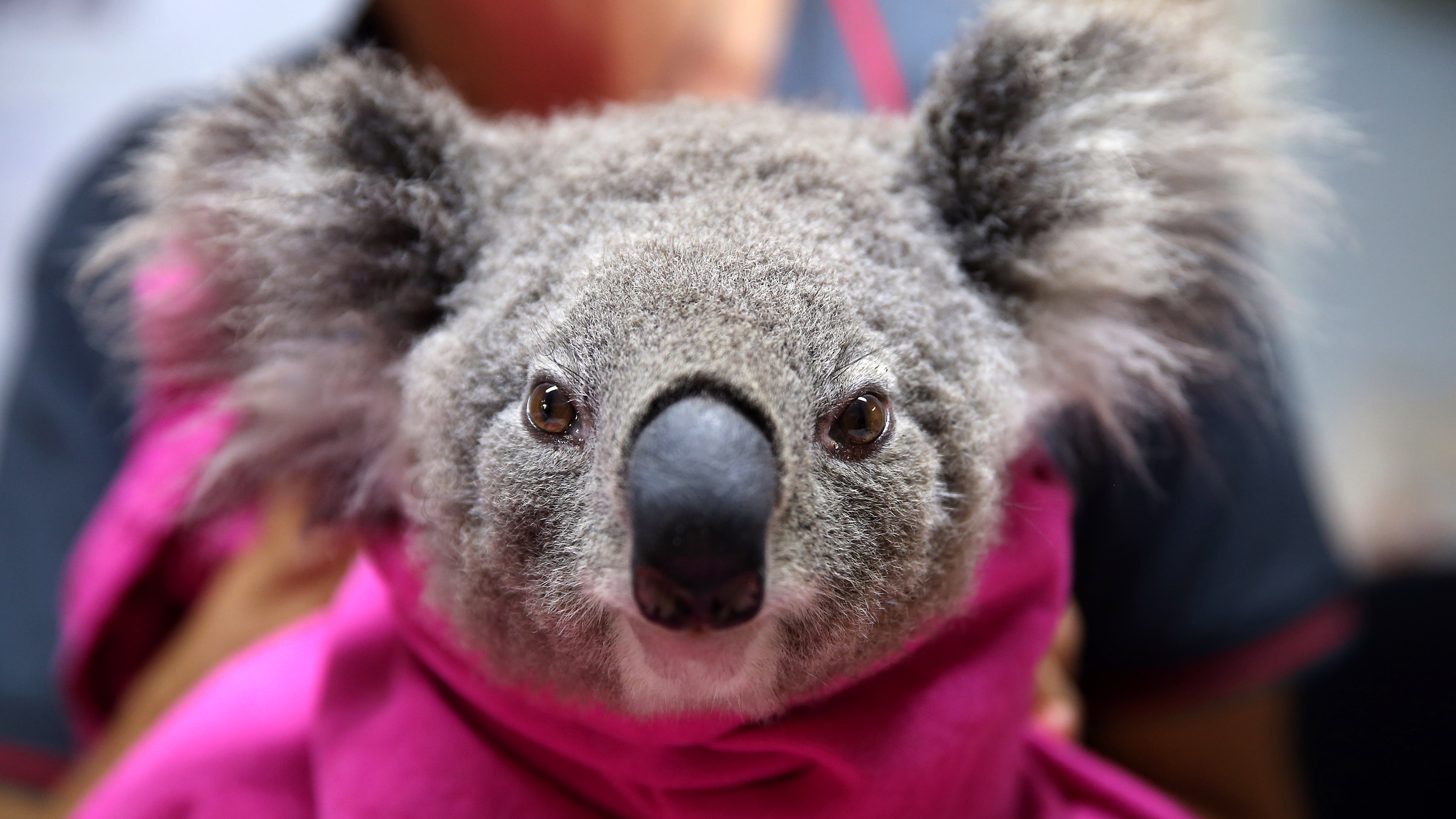
Another koala, this one named Lisa and from the NSW town of Pappinbarra, recovers from burns on Nov. 29 at The Port Macquarie Koala Hospital.
Tinny Arse
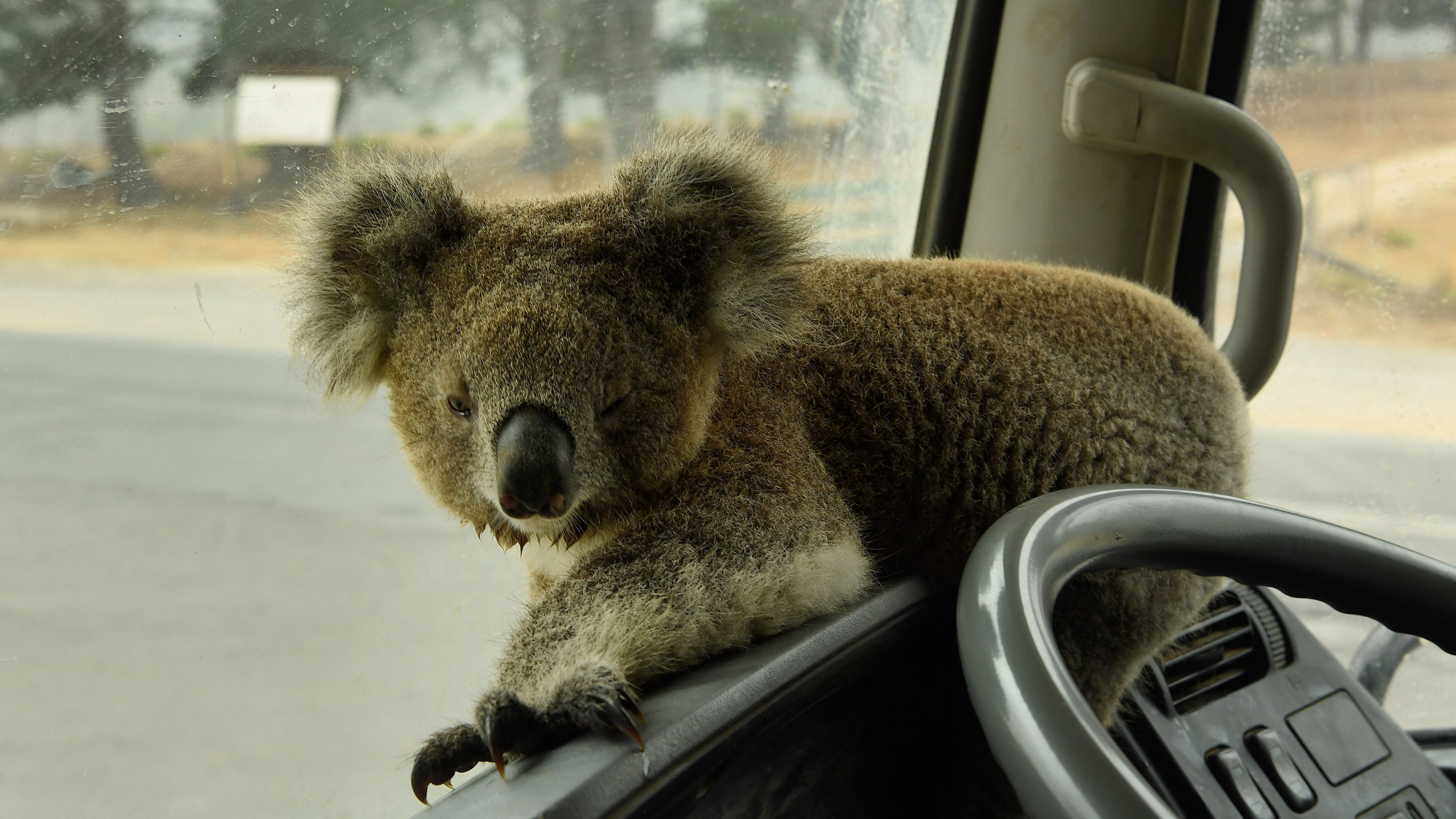
Water-tank operator Damian Campbell-Davys rescued a koala named "Tinny Arse" from a bushfire zone in New South Wales. The little koala sits in Campbell-Davys’ water tanker on Oallen Road near Nerriga, NSW, on Jan. 5, 2020.
Kangaroo smoke
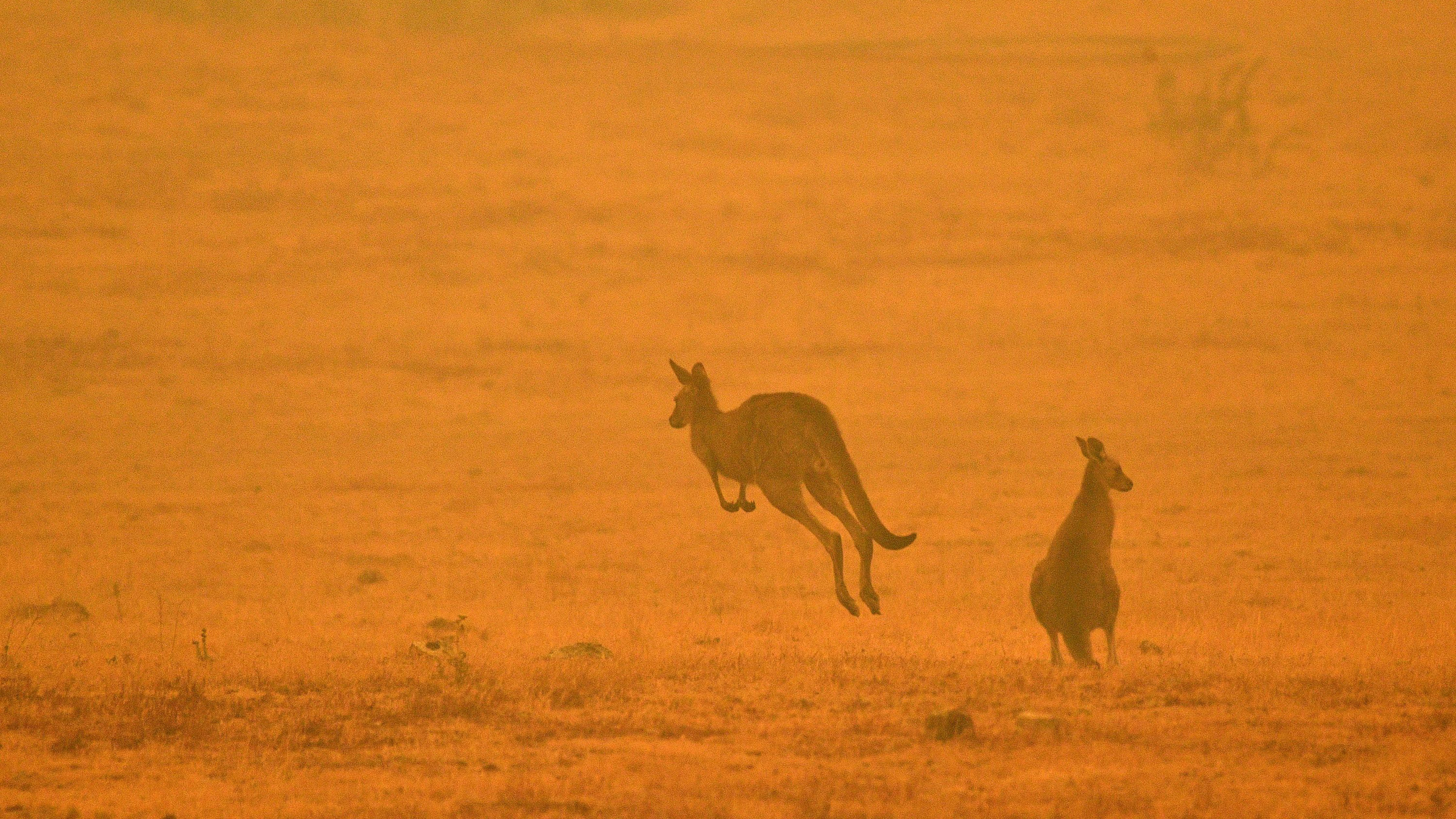
With smoke veiling the landscape, a kangaroo jumps about in Snowy Valley on the outskirts of Cooma on Jan, 4, 2020. At the time, up to 3,000 military reservists were called up to tackle the relentless bushfires; and tens of thousands of residents fled from their homes.
Escaping the flames
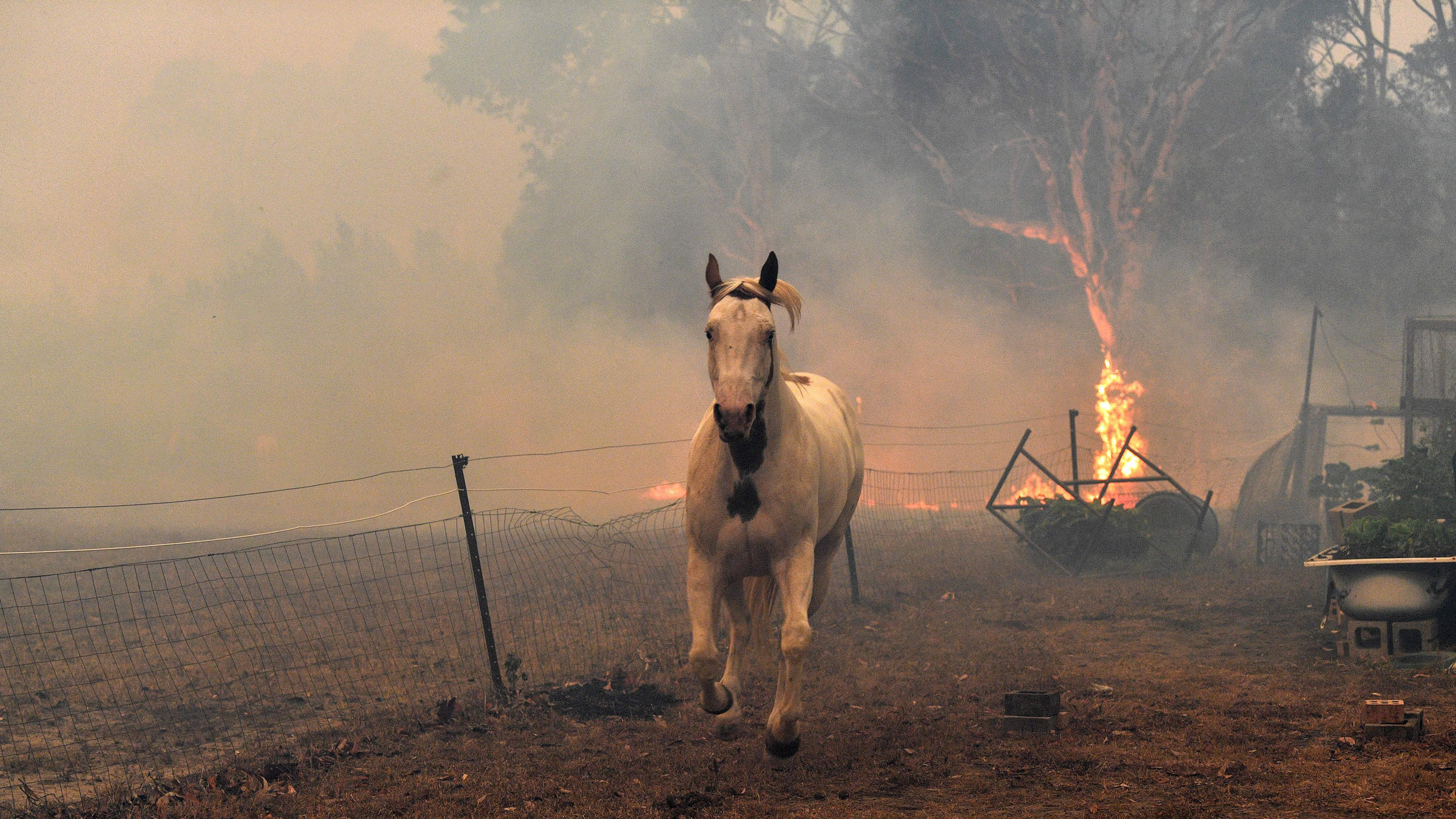
A horse tries to escape a nearby bushfire in a residential property near the town of Nowra in New South Wales, on Dec. 31, 2019. The fires are devastating both human and animal life; Two volunteer firefighters were killed while battling the flames in New South Wales on Dec. 19, according to CNN.
Get the world’s most fascinating discoveries delivered straight to your inbox.
Fire tornado
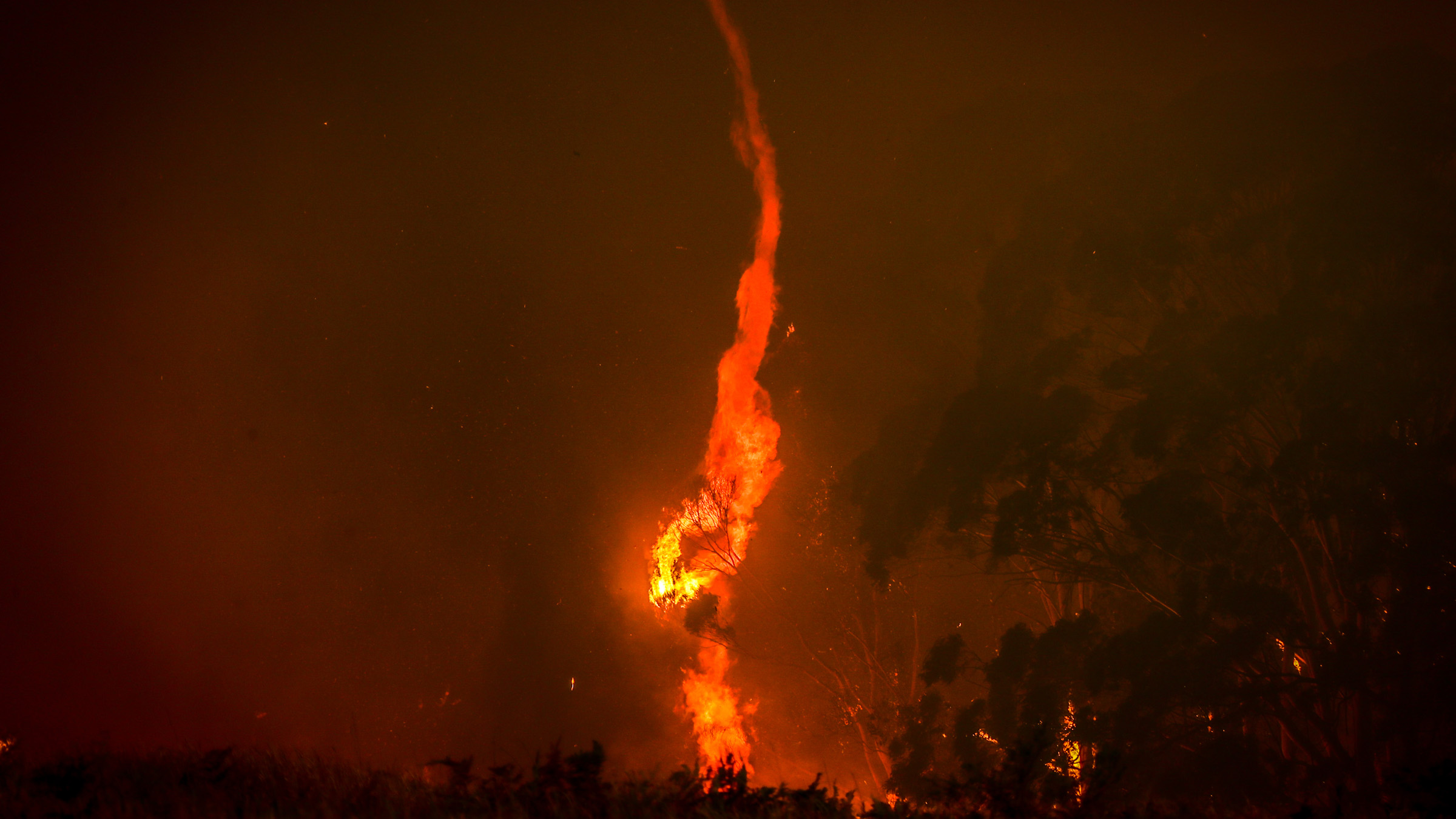
A fire tornado forms inside a bushfire near homes on the outskirts of Bilpin in Sydney, Australia, on Dec, 19. Fire tornadoes are formed when hot, dry air rises quickly from the ground to create vertical columns or chimney-like structures. That air keeps rising until it cools down, becoming less dense and dissipating. But as more hot air gets pulled into the chimney, it begins to swirl in a vortex.
Sunset surfers
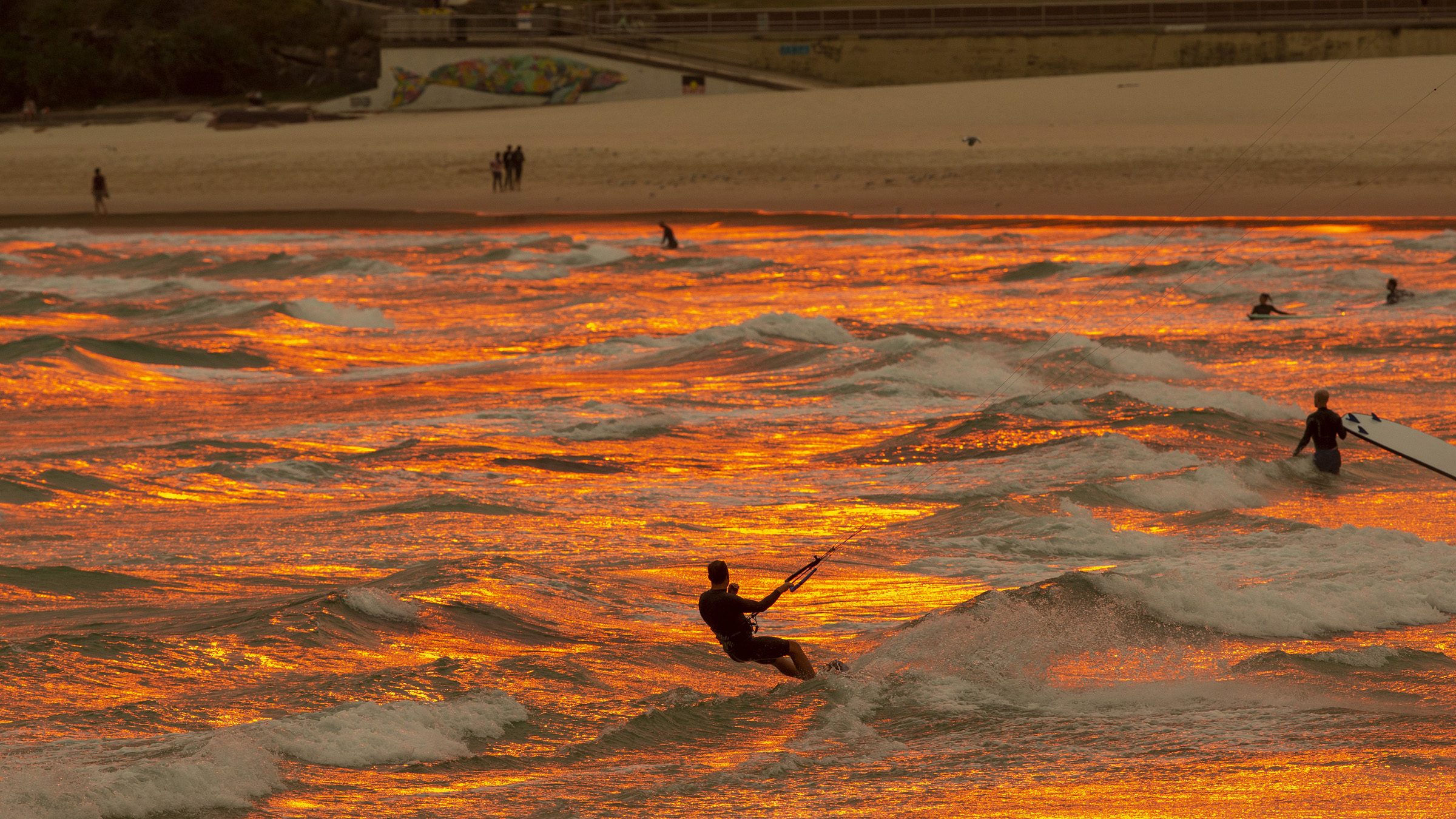
The bushfires are creating vivid orange sunsets. Here, a hazy red sunset blankets Bondi Beach in Sydney, Australia, on Dec. 19.
Black carbon
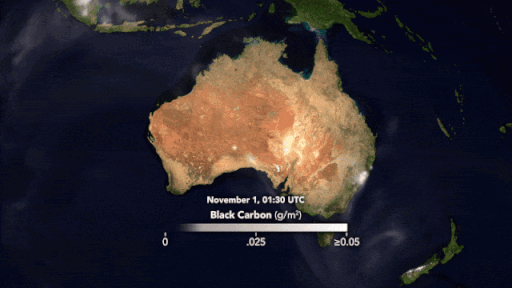
This animation is a model of where the black smoke from the raging Australian wildfires is traveling. It's based off of the GEOS forward processing (GEOS FP) model, which combines information from satellite, aircraft and ground-based observation systems and uses data such as air temperature, moisture levels and wind information to project the plume's behavior.
Originally published on Live Science.

Jeanna Bryner is managing editor of Scientific American. Previously she was editor in chief of Live Science and, prior to that, an editor at Scholastic's Science World magazine. Bryner has an English degree from Salisbury University, a master's degree in biogeochemistry and environmental sciences from the University of Maryland and a graduate science journalism degree from New York University. She has worked as a biologist in Florida, where she monitored wetlands and did field surveys for endangered species, including the gorgeous Florida Scrub Jay. She also received an ocean sciences journalism fellowship from the Woods Hole Oceanographic Institution. She is a firm believer that science is for everyone and that just about everything can be viewed through the lens of science.


